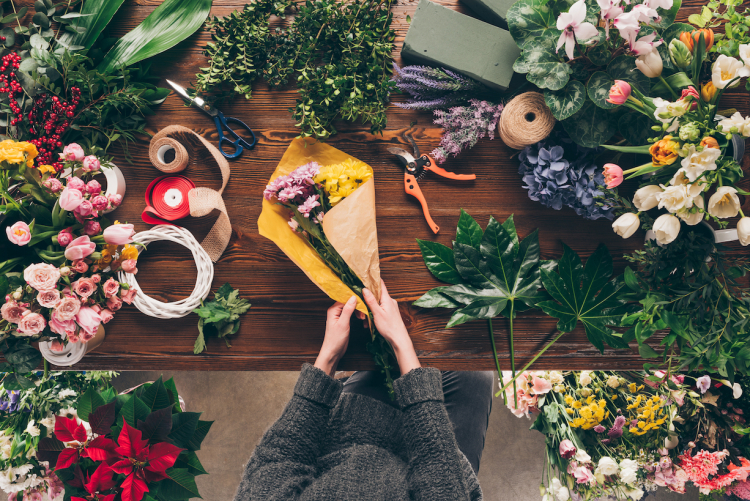Is Your Green Thumb Sustainable This Valentine's Day?

In honor of Valentine’s Day approaching, it is important to consider the preparation process between consumers and florists. This can begin 6 months to a year in advance. But the beginning of February is when the real chaos begins. Crates and cardboard boxes filled with cut flowers, planters, and ribbons, as well as retailer coolers begin to flood the backrooms. With this, comes boxes of plastic bags, water-resistant wrapping paper and endless amounts of floral foam.
Flower bouquets, Image Credit: Shutterstock/239716696Walking through the streets of Paris, I stopped to look at the coral colored roses in front of a florist located in the 7th arrondissement. I was interrupted by a floral delivery truck revving up its engine to speed to the next buyer. Standing in the cloudy smog of emission fumes, a question came to mind. How green is the floral industry, especially during a time of high demand? In comparison to the fashion industry that has had a large impact on CO2 emissions and global waste, the floral industry seems to do minor damage to the Earth.
Flower delivery, Image Credit: Shutterstock/90300217
According to Francesca Willow, writer, and creator of Ethical Unicorn, the floral industry has a significant carbon footprint. She states in her blog, “Around 80% of flowers in western shops are imported from countries such as The Netherlands, Kenya, Colombia, Vietnam, and Ecuador.” The import and export of flowers have played a large role in the growing CO2 emissions, especially during Valentine’s day. She also explains another issue aside from transportation fumes, which is floral Foam. Floral Foam is green rectangular prism block that are ordered in large quantities and used by florists yearly. “Unfortunately, it is also a non-biodegradable, oil-derived plastic material that is made with carcinogenic chemicals,” states Willow.
Several industry professionals have been working towards creating an environmentally conscious work environment. The floral designer and owner of California's Monkey Flower Group, Jamie Giorgi explains how she has been implementing sustainable practices throughout her work. She has turned to utilizing organic cotton and rayon ribbons, “It’s biodegradable, made from renewable raw materials, readily available from US manufacturers (ensuring certain levels of environmental and labor, and safety standards).”
As we continue to enter this new decade, I suspect that many floral companies and clothing brands will continue to find new and innovative ways to become more sustainable. If you are one of many that will be purchasing flowers this Valentine’s Day, visit the website Going Zero Waste to learn how to keep it Green!









